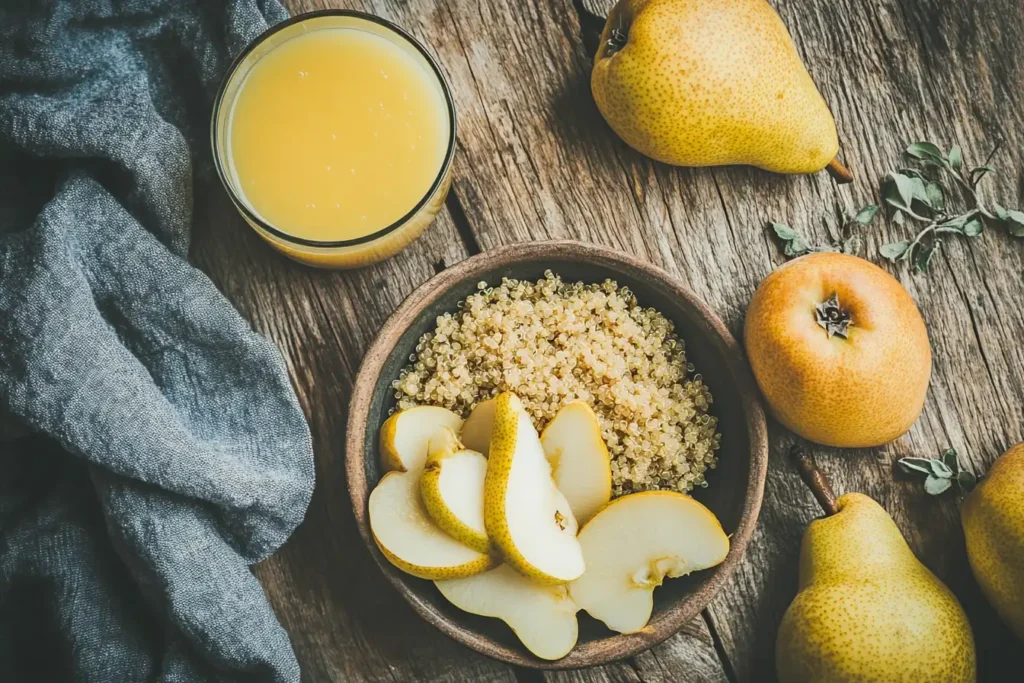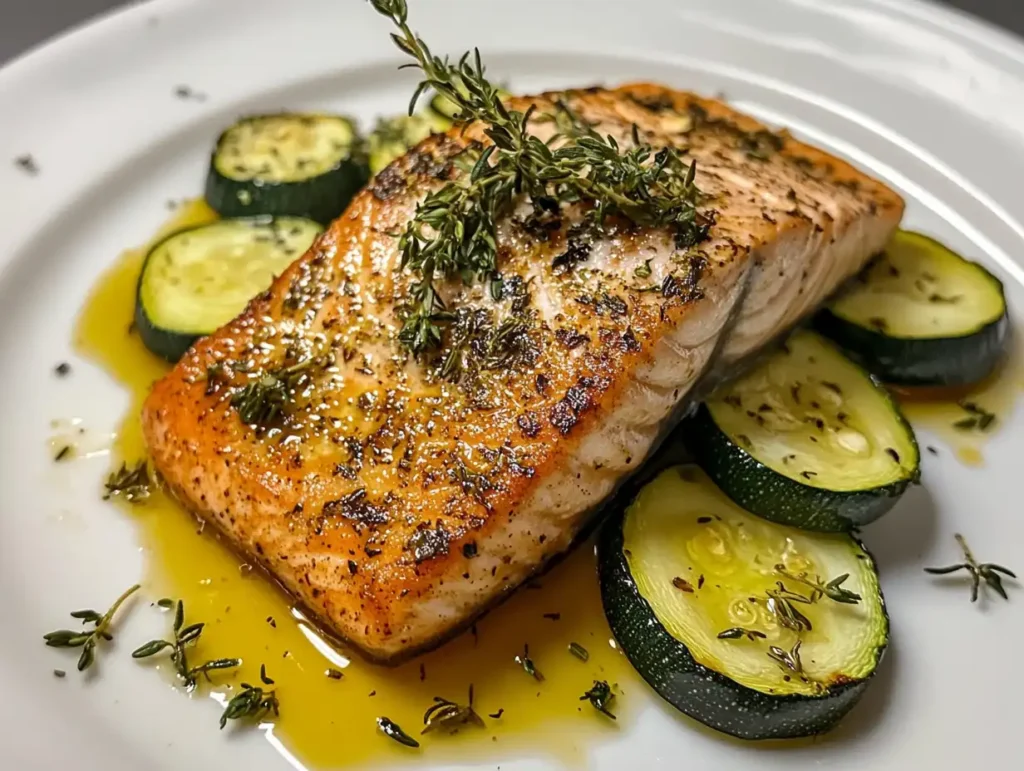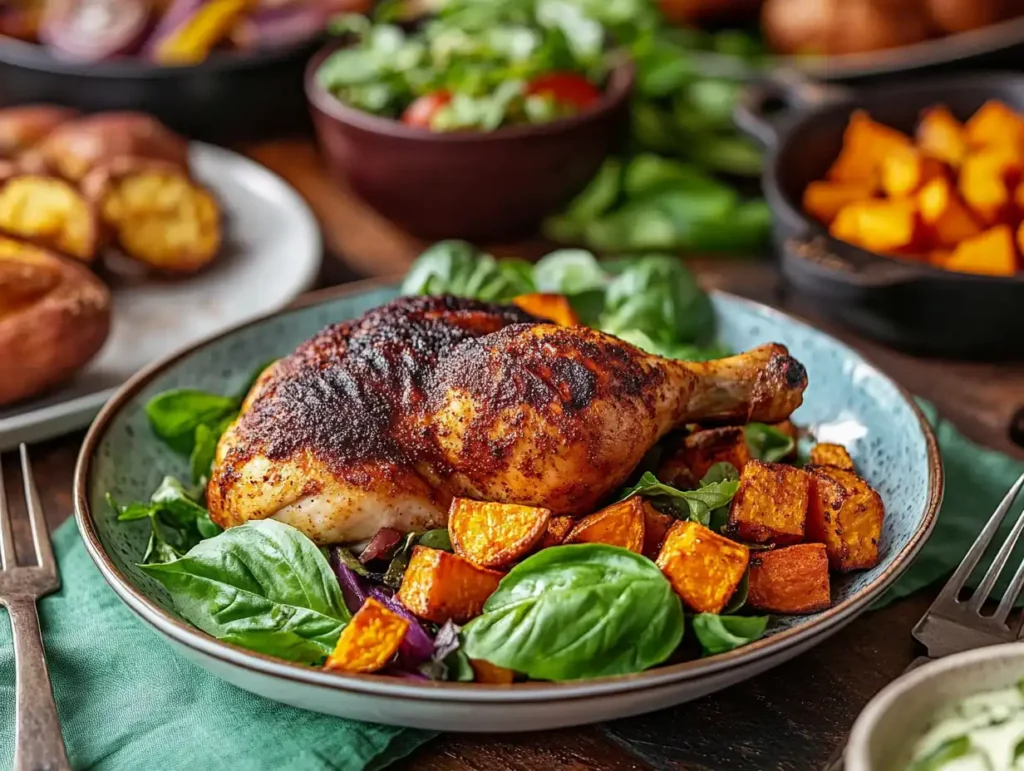Are you struggling to maintain a low histamine diet without feeling limited or overwhelmed? You’re not alone. For those with histamine intolerance, finding suitable recipes can feel like navigating a maze. But don’t fret—this article is here to serve as your comprehensive guide to crafting delightful, nutrient-rich meals that align with your dietary needs. From understanding the basics of histamine intolerance to discovering flavorful breakfast, lunch, and dinner options, we’ve got you covered. Let’s dive into the world of low histamine recipes that are as satisfying as they are healthy.

Understanding Low Histamine Diets and Their Importance
What Is a Low Histamine Diet?
A low histamine diet is designed to reduce the intake of foods high in histamine, a naturally occurring compound in the body and certain foods. Histamine plays a crucial role in immune response, digestion, and neurological functions, but too much can trigger adverse reactions in sensitive individuals. Adopting this diet helps minimize symptoms like headaches, hives, or digestive distress caused by histamine intolerance.
Why Is It Important?
Histamine intolerance arises when the body’s ability to break down histamine is compromised. This often happens due to a deficiency of the enzyme diamine oxidase (DAO), which is essential for histamine breakdown. When histamine builds up, it can lead to a cascade of unpleasant symptoms. By focusing on foods that are naturally low in histamine, you can reduce inflammation, improve gut health, and feel your best daily.
Link Between Diet and Symptom Relief
Eating foods low in histamine is not just a preventive measure—it’s also a form of relief. Many people report significant improvements in their overall well-being within weeks of switching to a low histamine lifestyle. Plus, it’s easier than you might think once you know which foods to prioritize.
What Foods Are Allowed?
Good news: a low histamine diet isn’t about deprivation; it’s about choices. You can enjoy fresh fruits like pears, apples, and blueberries, vegetables such as zucchini and carrots, and proteins like fresh chicken or turkey. The focus is on freshness because histamine levels rise as foods age, even in storage.
What Is Histamine and Histamine Intolerance?
Defining Histamine and Its Role
Histamine is a natural compound found in the body that acts as both a neurotransmitter and a signaling molecule in the immune system. It’s essential for functions like regulating sleep, supporting digestion by stimulating stomach acid production, and defending against allergens. However, too much of a good thing can quickly become a problem.
When histamine levels rise beyond what your body can handle, symptoms such as itchy skin, nasal congestion, bloating, or migraines may occur. For most people, histamine is easily broken down, but for those with histamine intolerance, the challenge lies in reduced activity of the enzyme diamine oxidase (DAO).
What Is Histamine Intolerance?
Histamine intolerance is less about histamine itself and more about the body’s inability to process it efficiently. This can happen due to genetic factors, gut imbalances, or even medications that interfere with DAO. While not an allergy, histamine intolerance can mimic allergic reactions, making it tricky to diagnose. A few hallmark signs include:
- Persistent headaches or migraines
- Flushing or skin rashes
- Digestive issues such as diarrhea or bloating
- Runny nose or watery eyes
The Balance Between Histamine and DAO
DAO plays the lead role in breaking down dietary histamine, keeping levels in check. But when DAO is underperforming—whether due to gut issues, genetics, or diet—histamine builds up. This imbalance triggers reactions that can affect daily life. A low histamine diet helps by reducing the histamine load, giving your body the chance to reset and find equilibrium.
How Does Histamine Intolerance Differ From Allergies?
While allergies involve an immune response to specific triggers like pollen or certain foods, histamine intolerance is rooted in the accumulation of histamine itself. Unlike an allergy, it doesn’t require exposure to a specific allergen. This distinction is crucial when identifying whether symptoms stem from histamine overload or something else entirely.
By better understanding the science behind histamine and its role in our bodies, you’re already a step closer to taking control of your health.
Benefits of a Low Histamine Diet
Symptom Relief Through Dietary Changes
Switching to a low histamine diet can feel like a revelation for those battling histamine intolerance. Many experience immediate improvements, such as fewer headaches, reduced skin irritation, and better digestion. By lowering histamine intake, you’re not just managing symptoms—you’re taking a proactive approach to your well-being.
Consider this: instead of constantly worrying about which foods might trigger a reaction, a carefully planned diet removes that stress. With a reduced histamine load, your body finally gets the chance to recover, offering relief from chronic discomfort.
Better Gut Health and Reduced Inflammation
The benefits of a low histamine diet go beyond symptom management. It’s also an effective way to support gut health and reduce systemic inflammation. High histamine levels can irritate the lining of the digestive tract, potentially exacerbating conditions like leaky gut or irritable bowel syndrome (IBS). By focusing on histamine-friendly ingredients, you can improve gut flora, strengthen digestion, and prevent further inflammation.
Improved Energy and Mental Clarity
Ever feel like histamine intolerance weighs you down, both physically and mentally? You’re not imagining it. Histamine overload can lead to fatigue and even brain fog. Reducing dietary histamine allows your body to focus its energy on other processes, boosting vitality and mental sharpness. No more midday crashes or cloudy thinking—just sustained energy to power through your day.
A Long-Term Approach to Wellness
The beauty of a low histamine lifestyle lies in its sustainability. It’s not about quick fixes or fads but making informed choices that benefit you in the long run. By incorporating wholesome, fresh foods and avoiding known triggers, you’re laying the foundation for a healthier, happier life. Plus, the positive changes often ripple out into other areas, like improved sleep, mood, and immunity.
While transitioning to a new diet can seem daunting, the benefits—both immediate and long-term—make the effort worthwhile. The key is understanding your body’s needs and giving it what it craves: balance and nourishment.
Foods to Include and Avoid in a Low Histamine Diet
Low Histamine Foods to Incorporate
Crafting a menu for a low histamine diet can feel daunting at first, but the good news is there are plenty of delicious and nutritious options. These foods are naturally low in histamine and are the foundation of a balanced diet:
- Fresh Proteins: Chicken, turkey, and freshly caught fish (cooked immediately).
- Vegetables: Zucchini, carrots, cauliflower, cucumber, sweet potatoes, and spinach (fresh and not canned or fermented).
- Fruits: Apples, pears, blueberries, and mangoes are all histamine-friendly.
- Herbs and Seasonings: Basil, oregano, parsley, and fresh garlic.
- Grains and Legumes: White rice, quinoa, and chickpeas (if tolerated).
- Dairy Alternatives: Coconut milk and almond milk (unsweetened and additive-free).
These foods not only support your health but also allow for endless creativity in the kitchen. When in doubt, prioritize freshness—histamine levels in foods can rise as they age or are stored for long periods.
High Histamine Foods to Avoid
On the flip side, some foods are notoriously high in histamine or trigger its release in the body. Here’s what to steer clear of:
- Aged or Processed Foods: Aged cheeses, cured meats, smoked fish, and fermented products (e.g., sauerkraut, kimchi).
- Leftovers: Foods that have been cooked and stored in the fridge for more than 24 hours.
- Certain Fruits: Strawberries, bananas, pineapples, and avocados are high in histamine.
- Tomatoes and Eggplants: These nightshade vegetables can exacerbate symptoms.
- Alcohol and Vinegar-Based Products: These are histamine-heavy and can easily worsen intolerance symptoms.
Eliminating these foods might feel restrictive initially, but with so many fresh alternatives, the diet quickly becomes second nature. Staying vigilant about these triggers is essential to keeping symptoms at bay.
Freshness: The Golden Rule
Did you know histamine levels increase as food ages, even in the refrigerator? This is why consuming fresh ingredients and avoiding leftovers are non-negotiable for those with histamine intolerance. If you prep meals in advance, consider freezing individual portions to retain their low histamine content.
By focusing on incorporating histamine-friendly ingredients while avoiding common triggers, you’re setting yourself up for success. With this solid foundation, meal planning and preparation become far more manageable!
Meal Planning and Preparation
Tips for Creating Low Histamine Meal Plans
Starting a low histamine diet might feel overwhelming, but meal planning can simplify the process. Here are some practical tips to keep your kitchen organized and your meals satisfying:
- Plan Ahead: Choose recipes for the week that use fresh, histamine-friendly ingredients to avoid last-minute food choices that might not align with your diet.
- Batch Cooking with Care: Prepare meals fresh whenever possible, but if you batch cook, freeze individual portions immediately to prevent histamine buildup.
- Diverse Ingredients: Rotate your protein, vegetables, and grains to ensure a nutrient-dense diet without relying too heavily on specific items.
- Keep Snacks Handy: Quick options like sliced cucumbers, fresh fruit, or cooked quinoa can curb hunger without requiring additional prep.
- Invest in Fresh Produce: Shop for fresh, local produce that hasn’t been sitting in storage for weeks, as this minimizes histamine levels in your meals.
Importance of Freshness in Ingredients
When it comes to histamine intolerance, freshness isn’t just a preference—it’s a necessity. As foods sit in storage, whether in your fridge or on the supermarket shelf, histamine levels climb. To maintain a low histamine diet:
- Buy smaller quantities of perishable foods to ensure you consume them before they spoil.
- Freeze meats and fish immediately after purchase if you don’t plan to cook them that day.
- Avoid canned goods, as the processing and packaging often raise their histamine levels.
Make Prep Time Enjoyable
Turn meal prep into a relaxing ritual instead of a chore. Play music, enjoy a cup of herbal tea, or cook with a loved one. By shifting your perspective, you can turn planning and preparing meals into an enjoyable part of your weekly routine.
With proper planning and a focus on freshness, you’ll soon find that sticking to a low histamine diet becomes second nature. Let’s move on to the exciting part—recipes!
Low Histamine Recipes
Breakfast Options
Starting your day with a low histamine breakfast sets the tone for balanced energy and well-being. Here are some easy and delicious ideas:
- Quinoa Porridge with Blueberries and Almond Milk
Cook quinoa in water or coconut milk, then top with fresh blueberries and a drizzle of honey (if tolerated). This hearty dish is packed with nutrients and naturally low in histamine. - Pear Smoothie Bowl
Blend a fresh pear with unsweetened coconut milk and a handful of spinach. Top with chia seeds, grated coconut, and apple slices for a refreshing and energizing start to your day.
Lunch Ideas
Midday meals are an opportunity to recharge with flavorful and histamine-friendly options:
- Grilled Chicken and Zucchini Bowl
Marinate fresh chicken in olive oil, garlic, and parsley, then grill it alongside sliced zucchini. Serve with a side of steamed white rice or quinoa. - Herb-Roasted Sweet Potato Salad
Roast cubes of sweet potato with olive oil and basil. Toss them with fresh spinach, cucumbers, and a light dressing made of olive oil and lemon juice.

Dinner Suggestions
Dinner can still be delicious, even with dietary restrictions. These recipes are perfect for a relaxing evening meal:
- Baked Salmon with Steamed Carrots
Bake fresh salmon with a sprinkle of dill and a touch of olive oil. Pair it with steamed carrots and a side of mashed sweet potatoes for a filling meal. - Turkey and Vegetable Stir-Fry
Stir-fry ground turkey with zucchini, carrots, and fresh parsley in a bit of coconut oil. Serve over white rice for a satisfying dish.

Snack and Dessert Inspirations
Don’t forget to treat yourself! These low histamine snacks and desserts keep cravings at bay:
- Cucumber and Hummus Bites
Slice cucumbers into rounds and top with homemade hummus (made without tahini for lower histamine content). - Apple and Coconut Bliss Bites
Mix grated apple with shredded coconut and a touch of honey. Roll into small balls and chill before enjoying a naturally sweet treat.
These recipes are just the beginning! With a little creativity, you’ll find that cooking within the bounds of a low histamine diet can be as enjoyable as it is rewarding.
Addressing Common Challenges
Navigating Social Situations and Dining Out
Following a low histamine diet can be tricky when eating out or attending social events, but it’s not impossible. Here are some tips to stay on track:
- Do Your Homework: Check restaurant menus online in advance and call ahead to ask about ingredient flexibility. Many places are happy to accommodate dietary restrictions.
- Be Specific About Freshness: Ask for freshly prepared dishes, avoiding anything pre-marinated or made earlier in the day.
- Bring Your Own Snacks: For gatherings, pack a few low histamine-friendly snacks, like fresh fruit or rice cakes, to avoid going hungry.
Social situations don’t have to feel restrictive. By planning ahead and communicating clearly, you can still enjoy these occasions without compromising your health.
Managing Cravings and Nutritional Balance
Cravings are natural, especially when transitioning to a new way of eating. But you can manage them while maintaining balance:
- Sweet Cravings: Opt for fresh fruits like pears or apples, which are naturally sweet and histamine-friendly. Pair them with a small handful of nuts for added satisfaction.
- Savory Cravings: Snack on roasted sweet potato wedges or cucumber slices with homemade guacamole (without avocado if it’s a trigger).
- Stay Hydrated: Sometimes, what feels like a craving is really dehydration. Drink plenty of water or herbal teas throughout the day.
To maintain nutritional balance, include a mix of proteins, carbohydrates, and fats in every meal. By prioritizing variety and freshness, you’ll keep your meals satisfying while ensuring your body gets the nutrients it needs.
Addressing these challenges head-on will make sticking to a low histamine diet more manageable, even in the long term.
Frequently Asked Questions (FAQs)
What is the difference between ditali and ditalini pasta?
Ditali and ditalini are both small tube-shaped pastas, but their size is the key difference. Ditali are slightly larger and thicker, making them ideal for hearty soups or stews. On the other hand, ditalini are smaller and more compact, often used in lighter dishes or salads for a delicate texture.
Why use ditalini pasta?
Ditalini pasta is perfect for dishes where the pasta should complement, not overwhelm, other ingredients. Its small size makes it blend seamlessly into brothy soups, like minestrone, and cold pasta salads. Plus, its shape holds onto dressings or sauces exceptionally well, ensuring every bite is flavorful.
How long does it take to boil ditalini pasta?
Cooking ditalini pasta is quick and straightforward. On average, it takes about 8 to 10 minutes to achieve an al dente texture. For softer pasta, you can extend the boiling time by a minute or two, but be careful not to overcook, as it can become mushy.
What pasta is closest to ditalini?
If you’re out of ditalini, don’t worry—there are alternatives! Tubettini and elbow macaroni are the closest in shape and size. Both options work well as substitutes in recipes, offering a similar texture and versatility for soups, salads, or casseroles.
Embracing a Low Histamine Lifestyle
A Journey Toward Wellness
Adopting a low histamine lifestyle isn’t just about managing symptoms—it’s about reclaiming control over your health. By understanding your body’s unique needs, you’re making choices that empower you to feel your best every day. From selecting fresh, wholesome ingredients to experimenting with new recipes, this diet fosters a deeper connection to what nourishes you.
Staying Motivated Through Change
Transitioning to a low histamine diet can feel overwhelming, especially at first. But with a bit of preparation and creativity, it soon becomes second nature. Start small—replace one high-histamine meal with a fresh, nutrient-packed option. Celebrate your successes, no matter how small they seem, because each step brings you closer to achieving balance.
The Bigger Picture of Health
While reducing histamine intake is crucial for managing intolerance, the benefits ripple into other aspects of your health. Better digestion, fewer inflammatory responses, improved energy, and even a clearer mind are all achievable when you align your diet with your body’s needs. It’s not just about eliminating triggers—it’s about embracing a way of life that uplifts you.
By embracing this holistic approach, the low histamine diet becomes more than a solution—it transforms into a lifestyle that nurtures long-term well-being. Whether you’re just starting or have been on this path for a while, remember: your health is worth every effort. Let this guide serve as a foundation for your journey to a healthier, happier you.

